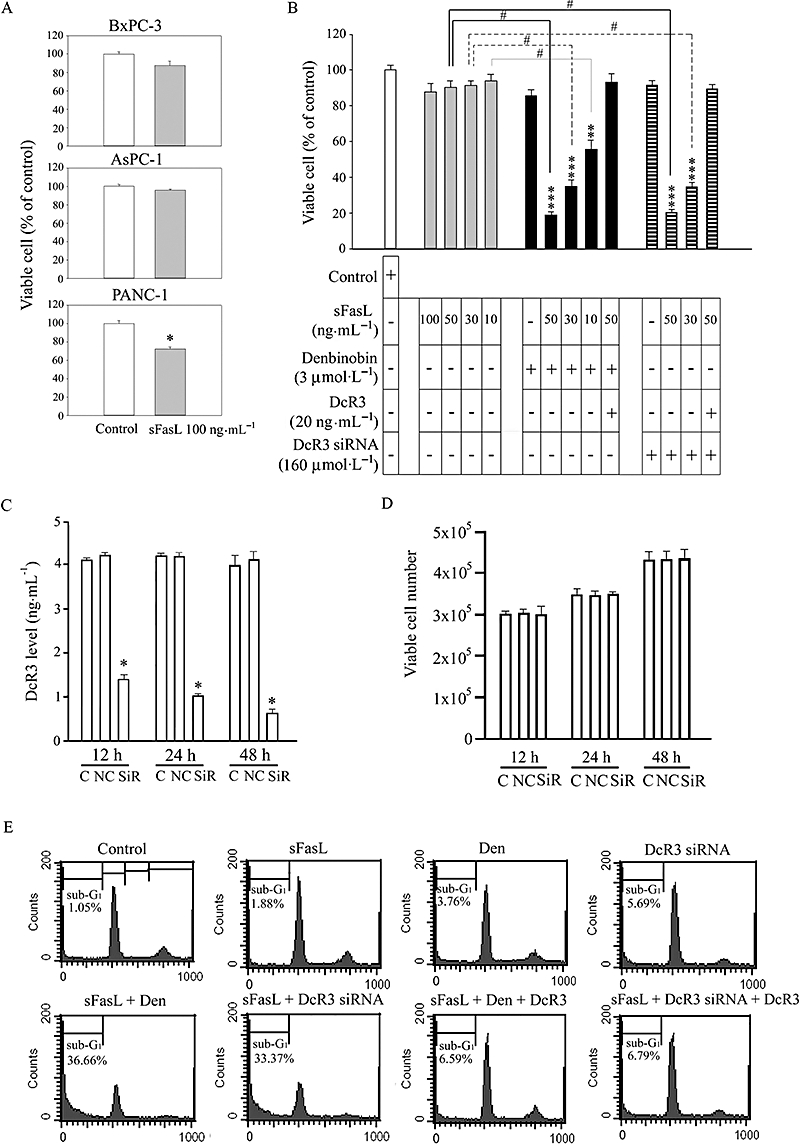Figure 3.

Denbinobin synergistically enhanced soluble recombinant human Fas ligand (sFasL)-induced apoptosis in human pancreatic cancer cells. (A) Cells (1 × 104) were treated with sFasL 100 ng·mL−1 for 48 h and viable cell numbers were examined by the MTT assay. (B) BxPC-3 cells (1 × 104) were cultured for 24 h. Cell viability after treatment with different concentrations of sFasL, 3 µmol·L−1 denbinobin and transfection of 160 nmol·L−1 DcR3 siRNA in the absence or presence of decoy receptor 3 (DcR3)/Fc (20 ng·mL−1) for 24 h were detected by MTT assay. Data represent the mean ± SEM from four independent experiments. **P < 0.01 and ***P < 0.001 as compared with the control group respectively. #P < 0.01 as compared with different groups as indicated. (C) BxPC-3 cells (1 × 105) were transiently transfected with 160 nmol·L−1 DcR3 siRNA (SiR) or non-silence control siRNA (NC), then supernatants were collected at the indicated time and DcR3 levels measured by ELISA. The data are the mean ± SEM for five separate experiments. *P < 0.05 compared with the control group respectively. (D) Cells (2 × 105) were transfected as indicated for different time periods and viable cell numbers measured using the MTT assay. The data are the mean ± SEM for five separate experiments. (E) BxPC-3 cells were treated with different reagents as indicated for 24 h. Then, the cells were fixed and stained with propidium iodide to analyse DNA content by the FACScan flow cytometer. The cell cycle phase (sub-G1, G0/G1, S, G2/M) is indicated. Sub-G1 phase is indicative of apoptosis. Three independent experiments were performed.
